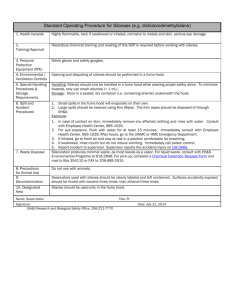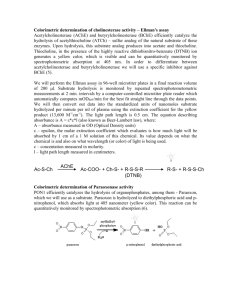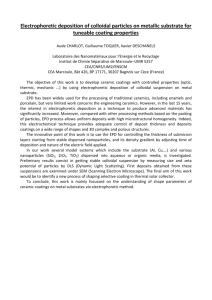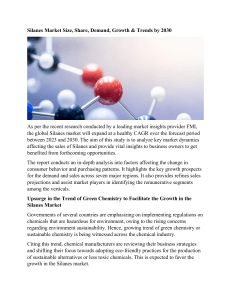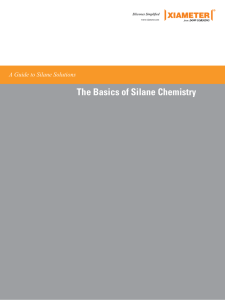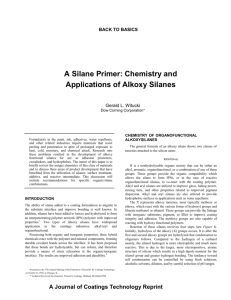How does a Silane Coupling Agent Work? Hydrolysis
advertisement
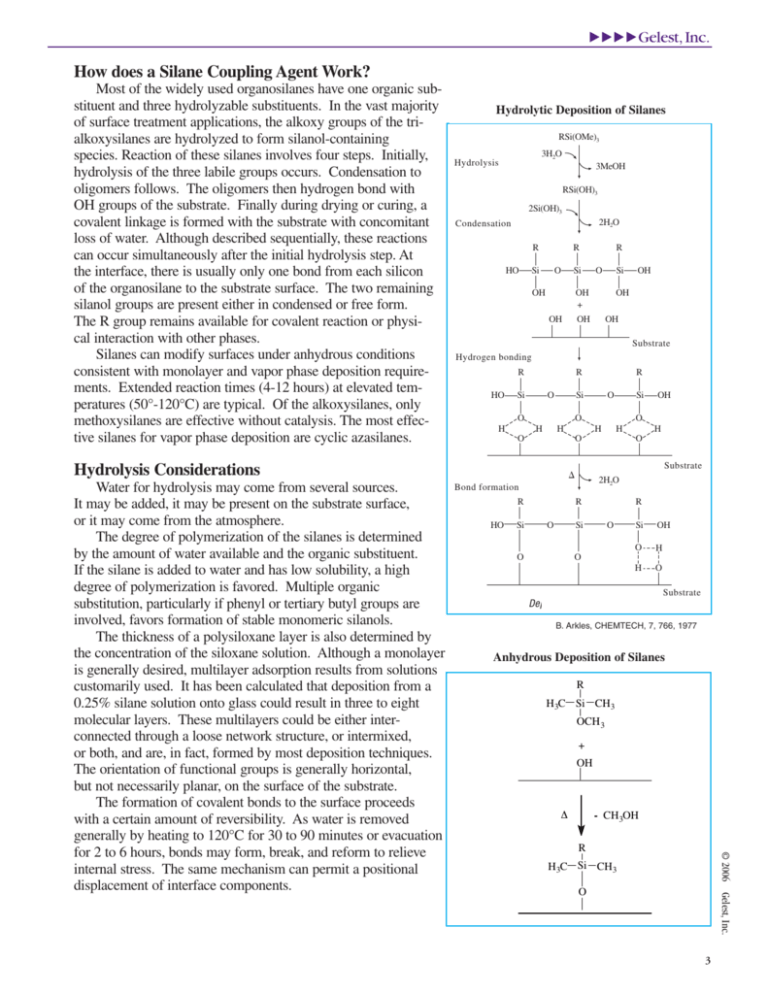
Gelest, Inc. How does a Silane Coupling Agent Work? Most of the widely used organosilanes have one organic substituent and three hydrolyzable substituents. In the vast majority of surface treatment applications, the alkoxy groups of the trialkoxysilanes are hydrolyzed to form silanol-containing species. Reaction of these silanes involves four steps. Initially, hydrolysis of the three labile groups occurs. Condensation to oligomers follows. The oligomers then hydrogen bond with OH groups of the substrate. Finally during drying or curing, a covalent linkage is formed with the substrate with concomitant loss of water. Although described sequentially, these reactions can occur simultaneously after the initial hydrolysis step. At the interface, there is usually only one bond from each silicon of the organosilane to the substrate surface. The two remaining silanol groups are present either in condensed or free form. The R group remains available for covalent reaction or physical interaction with other phases. Silanes can modify surfaces under anhydrous conditions consistent with monolayer and vapor phase deposition requirements. Extended reaction times (4-12 hours) at elevated temperatures (50°-120°C) are typical. Of the alkoxysilanes, only methoxysilanes are effective without catalysis. The most effective silanes for vapor phase deposition are cyclic azasilanes. Hydrolytic Deposition of Silanes RSi(OMe)3 3H2O Hydrolysis 3MeOH RSi(OH)3 2Si(OH)3 2H2O Condensation R HO R Si O OH O Si OH + OH OH OH OH OH Substrate Hydrogen bonding R HO R Si O O H H Si H O Substrate R O R O Si O H O 2H2O Bond formation R OH O H Si O O H O HO R Si Hydrolysis Considerations Si OH O H H O O Substrate Deposition of Silanes. B. Arkles, CHEMTECH, 7, 766, 1977 Anhydrous Deposition of Silanes R H3C Si CH3 OCH 3 + OH Δ - CH3OH R © 2006 Gelest, Inc. Water for hydrolysis may come from several sources. It may be added, it may be present on the substrate surface, or it may come from the atmosphere. The degree of polymerization of the silanes is determined by the amount of water available and the organic substituent. If the silane is added to water and has low solubility, a high degree of polymerization is favored. Multiple organic substitution, particularly if phenyl or tertiary butyl groups are involved, favors formation of stable monomeric silanols. The thickness of a polysiloxane layer is also determined by the concentration of the siloxane solution. Although a monolayer is generally desired, multilayer adsorption results from solutions customarily used. It has been calculated that deposition from a 0.25% silane solution onto glass could result in three to eight molecular layers. These multilayers could be either interconnected through a loose network structure, or intermixed, or both, and are, in fact, formed by most deposition techniques. The orientation of functional groups is generally horizontal, but not necessarily planar, on the surface of the substrate. The formation of covalent bonds to the surface proceeds with a certain amount of reversibility. As water is removed generally by heating to 120°C for 30 to 90 minutes or evacuation for 2 to 6 hours, bonds may form, break, and reform to relieve internal stress. The same mechanism can permit a positional displacement of interface components. Si R H3C Si CH3 O 3

